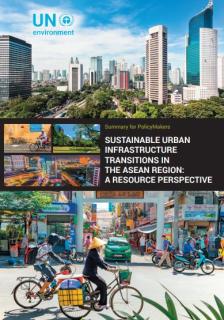
The ASEAN nations are a hot spot for rapid urbanization over the next 30 years: Between 2015 and 2050, ASEAN cities are projected to add 205 million new urban residents to the 320 million current urbanites in the region, creating one of the world’s largest middle-income emerging markets after China and India.
There is a once-in-a-lifetime strategic opportunity for the ASEAN region to plan ahead for building sustainable, resource-efficient, and inclusive infrastructures for future cities. If the ASEAN region’s projected rapid urbanization proceeds according to current business-as-usual practices, ASEAN cities will see existing urban challenges exacerbated and the emergence of potentially new challenges such as those already seen in fast-growing cities in China and India.
The Sustainable Urban Infrastructure Transitions in the ASEAN Region: A Resource Perspective report highlights five strategic infrastructure pathways for resource-efficient and inclusive urban development. Building upon the UN Environment/International Resources Panel’s (IRP) global report, The Weight of Cities: Future Resource Requirements of Future Urbanization , the pathways show great potential for application in diverse cities across the ASEAN region. Requiring action at multiple levels of government, the pathways offer important opportunities to advance resource efficiency, providing opportunities for resource savings, economic savings, inclusive and equitable development, pollution mitigation, disaster resilience, and enhanced overall well-being of people and the planet.
